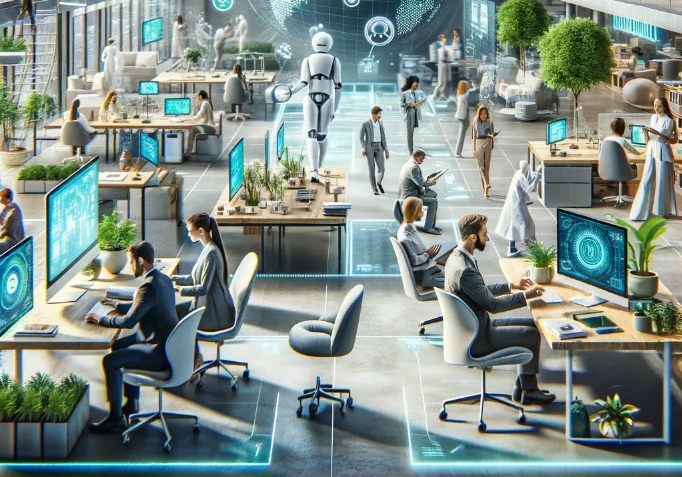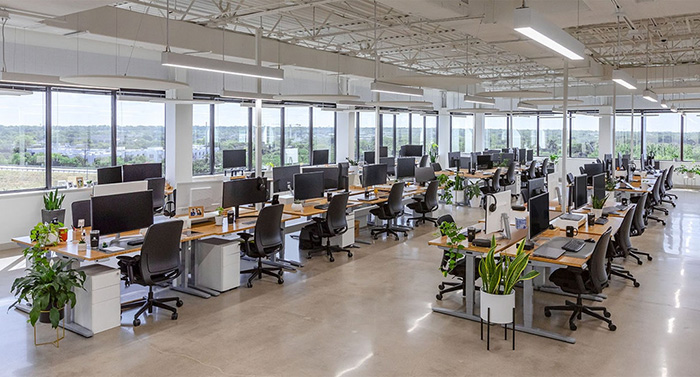Predicting the exact look of offices in 2030 involves considering current trends in technology, work culture, and design. A comprehensive view of what offices might look like in 2030:
1. Technology Integration

-
Smart Workspaces: Offices will likely be equipped with advanced IoT (Internet of Things) devices that control lighting, temperature, and security systems. AI will optimize these environments for energy efficiency and employee comfort.
-
Virtual and Augmented Reality: VR and AR will be used for meetings, training, and collaborative projects, making remote and hybrid work more interactive and engaging.
-
AI and Automation: AI-driven assistants and bots will handle routine tasks, allowing employees to focus on more complex and creative work. Automation will streamline workflows, from scheduling meetings to managing projects.
2. Flexible and Hybrid Work Models
-
Remote and On-site Balance: Hybrid work models will be the norm, with employees splitting their time between home and office. This flexibility will be supported by advanced communication tools and cloud-based collaboration platforms.
-
Hot Desking and Shared Spaces: Traditional assigned seating will be replaced by hot desking systems where employees book desks as needed. Shared spaces for collaboration, brainstorming, and socializing will be more prominent.
3. Health and Wellness Focus

-
Ergonomic Furniture: Height-adjustable desks, ergonomic chairs, and flexible workstations will be standard to promote physical health.
-
Biophilic Design: Incorporating natural elements like plants, water features, and natural lighting to improve air quality and employee well-being.
-
Wellness Programs: On-site gyms, meditation rooms, and wellness programs will be integrated into the office environment to support mental and physical health.
4. Sustainable and Eco-friendly Design
-
Energy-efficient Buildings: Offices will be designed with sustainability in mind, using energy-efficient materials, renewable energy sources, and smart systems to minimize carbon footprints.
-
Recycling and Waste Management: Enhanced recycling programs and waste reduction strategies will be implemented to promote a green office culture.
5. Collaborative and Creative Spaces
-
Open-plan Layouts: Open spaces that encourage collaboration and communication, with quiet zones for focused work.
-
Innovation Hubs: Dedicated areas for brainstorming, innovation, and experimentation, equipped with the latest technology and creative tools.
-
Social Spaces: Areas designed for social interaction, such as cafes, lounges, and game rooms, to foster a sense of community and enhance employee engagement.
6. Personalization and Customization
-
Adaptable Workstations: Desks and workspaces that can be easily customized to individual preferences, including adjustable heights, lighting, and temperature controls.
-
Personal Devices: Employees will use their own devices (BYOD - Bring Your Own Device) seamlessly integrated into the office ecosystem.
7. Safety and Security
-
Enhanced Cybersecurity: With the increase in remote work and digital collaboration, cybersecurity measures will be more robust, employing advanced encryption and AI-driven threat detection.
-
Health Safety Measures: In the wake of global health crises, offices will incorporate advanced health safety protocols, including touchless technology, air purification systems, and health monitoring.
Conclusion
The office of 2030 will be a dynamic, flexible, and technology-driven environment designed to enhance productivity, foster collaboration, and prioritize employee well-being. With a focus on sustainability, health, and advanced technological integration, future offices will be adaptive to the changing needs of the workforce.

